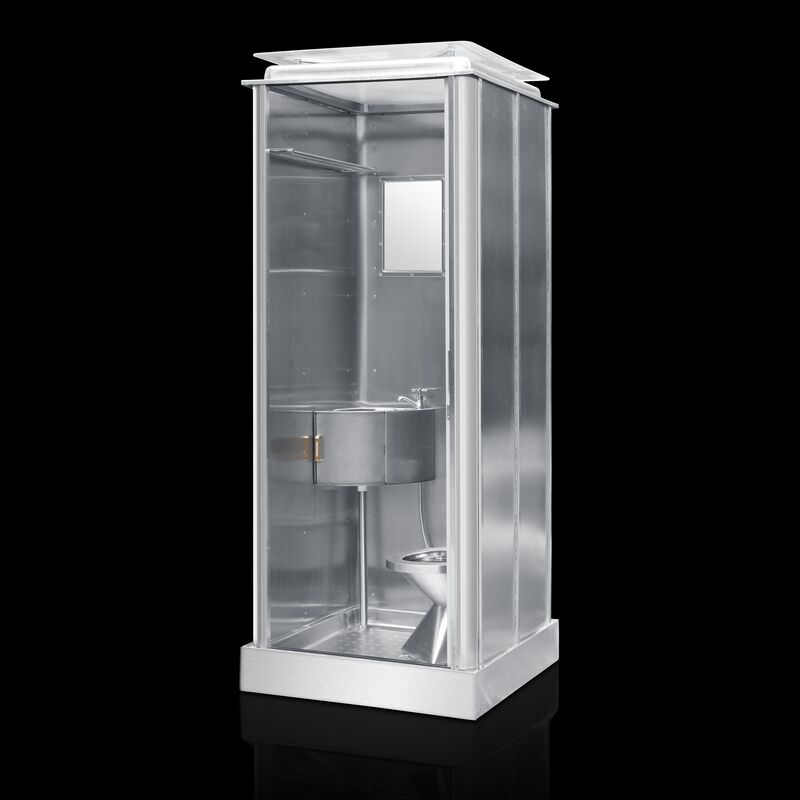In urban areas, public toilets play a crucial role in maintaining sanitation and public health. Among various materials used for public toilets, stainless steel stands out as an excellent choice. In this article, we will explore the advantages of stainless steel public toilets and mobile toilets in the context of urban sanitation.
Advantages of Stainless Steel Public Toilets
Durability and Longevity
Stainless steel is renowned for its exceptional durability. Public toilets are often exposed to heavy usage and harsh environments, but stainless steel can withstand these conditions without showing significant signs of wear and tear. Its resistance to corrosion, chipping, and staining ensures that the public toilets remain functional and aesthetically pleasing for a long period. Unlike some other materials that may deteriorate quickly under constant use, stainless steel maintains its structural integrity and appearance, reducing the need for frequent repairs and replacements. This durability is particularly vital in urban settings where public toilets are in high demand and constant use.
Vandalism Resistance
Vandalism is a common problem in public restrooms. Stainless steel's strength and sturdiness make it highly resistant to vandalism. It is difficult for vandals to damage stainless steel surfaces with graffiti, scratches, or dents, and even if they do, the marks can often be easily removed with standard cleaning products. This vandalism-resistant property helps maintain the cleanliness and tidiness of public toilets, deterring potential vandals and reducing the costs associated with repairing vandalism damage.
Hygiene and Cleanliness
Maintaining high hygiene standards is paramount in public toilets. Stainless steel is a non-porous material, which means it does not absorb bacteria, odors, or stains. This inherent property makes it one of the most hygienic materials for public toilet facilities. The smooth surface of stainless steel prevents the buildup of bacteria and germs, reducing the risk of infections and diseases. Cleaning stainless steel toilets is also relatively easy; a quick wipe with a damp cloth and mild soap can remove most dirt and grime. For tougher stains, non-abrasive cleaners specifically designed for stainless steel can be used without damaging the surface. This simplicity in cleaning saves time and labor costs for maintenance staff while ensuring that the public toilets are always in a sanitary condition for users.
Aesthetic Appeal
Stainless steel has a sleek, modern, and professional appearance that can enhance the overall aesthetic of public toilet facilities. Its reflective surface creates an illusion of a more spacious bathroom, making it visually appealing to users. This modern look blends well with various bathroom designs and architectural styles, allowing public toilets to be not just functional but also visually pleasing. In urban areas where design and appearance matter, stainless steel public toilets can contribute to the beautification of public spaces and leave a positive impression on residents and visitors.
Environmental Sustainability
Stainless steel is an eco-friendly material as it is 100% recyclable. At the end of its lifecycle, it can be reused to create new products without any loss of quality. This recyclability makes stainless steel public toilets an environmentally sustainable choice compared to other materials that may end up in landfills. By choosing stainless steel for public toilets, cities can demonstrate their commitment to reducing waste and promoting a circular economy, which is increasingly important in today's environmentally conscious society.
Cost-Effectiveness
Although the initial installation cost of stainless steel public toilets may be higher than some other materials, they offer long-term cost savings. Their durability and low maintenance requirements result in reduced ongoing costs associated with repairs, replacements, and cleaning. The extended service life of stainless steel toilets means that cities can avoid frequent investments in toilet infrastructure, ultimately leading to significant savings over time. In the long run, stainless steel public toilets prove to be a cost-effective solution for urban sanitation.
The Role of Mobile Toilets in Urban Sanitation
Flexibility and Convenience
Mobile toilets, also known as portable toilets, provide a flexible and convenient solution for urban sanitation. They can be easily transported and deployed to various locations where permanent toilet facilities are not available or are insufficient to meet the demand. For example, during large outdoor events, construction sites, or in areas undergoing maintenance work, mobile toilets can be quickly set up to meet the sanitation needs of people in those areas.
Space Efficiency
Mobile toilets are designed to be compact and space-efficient. They occupy minimal space when not in use and can be stored or transported easily. This makes them suitable for deployment in crowded urban areas where space is limited. Even in small parks, sidewalks, or narrow alleys, mobile toilets can be placed without causing significant obstruction.
Quick Setup and Deployment
One of the significant advantages of mobile toilets is their quick setup and deployment capability. Unlike permanent toilet facilities that require extensive construction work and time, mobile toilets can be ready for use within a short period. This is particularly useful in emergency situations or during unexpected events where sanitation facilities are urgently needed. For instance, in the aftermath of a natural disaster or during a sudden large gathering of people, mobile toilets can be rapidly deployed to address the immediate sanitation requirements and prevent public health issues.
Adaptability to Different Environments
Mobile toilets are highly adaptable to various environments and conditions. They can be placed on different types of terrain, including uneven or rough surfaces. Some mobile toilets are also equipped with features such as heating or air conditioning to suit different climate conditions. This adaptability ensures that sanitation services can be provided consistently across urban areas, regardless of the specific environmental challenges. Whether it's a busy downtown area, a serene park, or a remote construction site, mobile toilets can be customized and adjusted to meet the sanitation needs of different settings.
Cost-Effective Solution
For cities and event organizers, mobile toilets offer a cost-effective alternative to building permanent toilet facilities. The initial investment in mobile toilets is relatively low compared to constructing permanent toilets. Additionally, mobile toilets can be rented or leased for short-term use, which is more economical than building and maintaining permanent facilities for occasional events.

